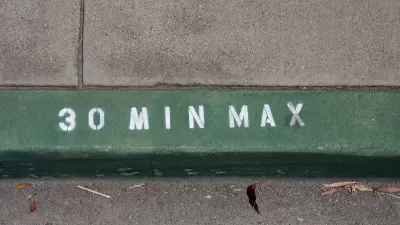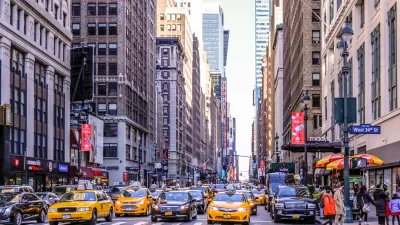SPUR, the San Francisco-based planing think tank, looks at the potential benefits to the public sector of using dynamic, demand-based pricing to manage limited public resources - from parking to electricity.
You're probably familiar with dynamic pricing as it's applied to the shifting cost of individual seats on an airplane, but a market-based approach to better match fixed supplies to fluctuations in demand is slowly catching on in the public sector too, reports Laura Tam. "Sometimes called demand-based pricing or real-time pricing, this is a
more efficient way of allocating publicly provided or regulated goods," says Tam,
"especially those that are subject to wide fluctuations in demand over a
short period of time, such as within an hour or a day. By judging
people's willingness to pay for a publicly provided service - such as
electricity, road space or parking - demand-based pricing enables a more
nimble match-up of supply and demand than has previously been possible. "
With the potential for public benefits in economic efficiency, development of revenue streams, and limiting of environmental impacts, technology is finally making dynamic pricing a possibility for public agencies. According to Tam, "[a] combination of new sensory and computing technologies,
two-way communications and devices that both create and analyze large
volumes of data can now measure and communicate real-time demand. This
information can be used to automate price signals for resources, such as
at smart parking meters. In some cases, it can also be used to remotely
trigger a certain action, such as powering down preselected devices
during periods of peak electricity demand."
Such pricing models are not without their challenges, however, including the potential for higher prices to have a bigger impact on people
with lower incomes. As such, says Tam, "[a]ny demand-based pricing scheme for public goods
must be designed to mitigate disproportionate impacts as much as
possible, especially with goods that were previously 'free.'"
FULL STORY: Smart Cities, Limited Resources

Planetizen Federal Action Tracker
A weekly monitor of how Trump’s orders and actions are impacting planners and planning in America.

Restaurant Patios Were a Pandemic Win — Why Were They so Hard to Keep?
Social distancing requirements and changes in travel patterns prompted cities to pilot new uses for street and sidewalk space. Then it got complicated.

Map: Where Senate Republicans Want to Sell Your Public Lands
For public land advocates, the Senate Republicans’ proposal to sell millions of acres of public land in the West is “the biggest fight of their careers.”

Maui's Vacation Rental Debate Turns Ugly
Verbal attacks, misinformation campaigns and fistfights plague a high-stakes debate to convert thousands of vacation rentals into long-term housing.

San Francisco Suspends Traffic Calming Amidst Record Deaths
Citing “a challenging fiscal landscape,” the city will cease the program on the heels of 42 traffic deaths, including 24 pedestrians.

California Homeless Arrests, Citations Spike After Ruling
An investigation reveals that anti-homeless actions increased up to 500% after Grants Pass v. Johnson — even in cities claiming no policy change.
Urban Design for Planners 1: Software Tools
This six-course series explores essential urban design concepts using open source software and equips planners with the tools they need to participate fully in the urban design process.
Planning for Universal Design
Learn the tools for implementing Universal Design in planning regulations.
Heyer Gruel & Associates PA
JM Goldson LLC
Custer County Colorado
City of Camden Redevelopment Agency
City of Astoria
Transportation Research & Education Center (TREC) at Portland State University
Camden Redevelopment Agency
City of Claremont
Municipality of Princeton (NJ)





























